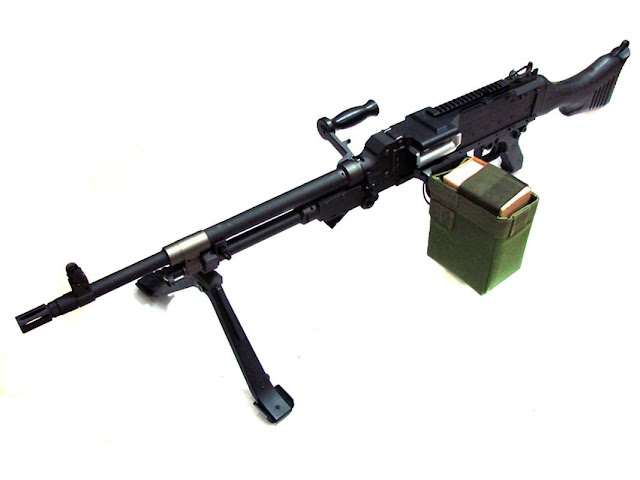Army and Weapons | M240 Refile | M240 was adopted by the U.S. military in 1977. The
M60E4 (Mk 43 set by the U.S. Navy) was pitted against the (then called)
M240E4 the Army trials in the 1990s for infantry medium machine gun
new, in the competition to replace the decades M60s. M240E4 win, and then classified as the M240B. This
led to 1000 existing M240 sent to FN for repairs and a special kit that
modified them for use on ground (such as stocks, rails, etc.). This led to procurement contracts in the late 1990s for all-new M240B.
However, new features are added, hydraulic buffer system to reduce fear as incorporated in the M60. While
the M240B had been more reliable in the tests, it's a few pounds
heavier than the M60E4, and there is a program underway for a new
medium-light machine guns in the early 2000s. The
Army M240 converted M240B configuration should not be confused with a
large number M240D converted into M240G configuration for the Marine
Corps.
M240BFamily Of M240 REFILE
M240C
M240D
M240G
M240H
M240L
Clearing the weapon is done by ensuring the bolt locked to the rear and the weapon is on safe. Feed
tray cover is then lifted, the remaining belt (if any) are swept out of
the feed tray, the feed tray is lifted to visually inspect the back of
the barrel and bolt face. Any links or brass casings removed. The weapon is now clear. In the rare event that the cycle of life is on the bolt face, knocking it loose with a cleaning rod or another rigid object. If
there is a live round lodged in the barrel, the operator must
immediately decide if the barrel is hot enough that there was a chance
to cook off. If anything, he will immediately move his face away from the opening gun.
He then had to wait for the barrel to cool before attempting to remove it. In
many cases, attempting to remove the barrel will cause the round to
detonate as soon as the barrel is opened by the recipient. Operators
can also try to extract the round by taking the weapon off of safe,
pulling the trigger and pull back on the charging handle. It has a fair chance of causing a firearm, so care must be taken to ensure that the weapons are pointed toward safe first.
<


















3.jpg)